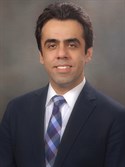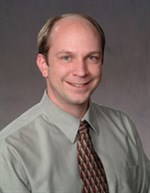Deeply concerned for the people and institutions affected by Hurricane Harvey, the National Science Foundation (NSF) issued a call for research addressing new science and engineering challenges related to Harvey, including preparedness for future catastrophic events. Four faculty from the Zachry Department of Civil Engineering at Texas A&M University answered that call, each receiving grants to research Harvey’s impact on different systems and provide essential data for future weather-related disasters.
Rapid Response Research (RAPID) grants ask for proposals focusing on projects with severe urgency with regard to availability of, or access to, data, facilities or specialized equipment, including quick-response research on natural disasters. The faculty are expected to turn in research results to the NSF within the first year of being awarded the grant.
 Dr. Shankar Chellam, J. Walter “Deak” Porter ’22 and James W. “Bud” Porter ’51 Professor, will show how metal concentrations and microorganism diversity changed and how those changes may lead to toxicity in the water. By collecting samples throughout the greater Houston area, he will characterize terrestrial floodwater and runoff through its makeup and microbial communities. This research is a collaborative effort with Dr. Jothikumar Narayanan, molecular biologist for the Water, Sanitation and Hygiene Laboratory at the Centers for Disease Control and Prevention headquarters in Atlanta.
Dr. Shankar Chellam, J. Walter “Deak” Porter ’22 and James W. “Bud” Porter ’51 Professor, will show how metal concentrations and microorganism diversity changed and how those changes may lead to toxicity in the water. By collecting samples throughout the greater Houston area, he will characterize terrestrial floodwater and runoff through its makeup and microbial communities. This research is a collaborative effort with Dr. Jothikumar Narayanan, molecular biologist for the Water, Sanitation and Hygiene Laboratory at the Centers for Disease Control and Prevention headquarters in Atlanta.

 Drs. Ali Mostafavi, assistant professor, and Bjorn Birgisson, Texas A&M Engineering Experiment Station (TEES) distinguished research professor and director of the Center for Infrastructure Renewal, have been awarded two NSF grants to study the emergency response to Harvey, analyzing ways to improve planning, communication and coordination risks that may arise in future extreme weather events. One research project will collect and analyze time-sensitive data in Houston to document the needs, challenges and required capabilities for enhanced management, decision-making and situation awareness in developing processes for disaster response. The co-principal investigators on the project are Drs. Xia Hu and Ruihong Huang from the computer science and engineering department.
Drs. Ali Mostafavi, assistant professor, and Bjorn Birgisson, Texas A&M Engineering Experiment Station (TEES) distinguished research professor and director of the Center for Infrastructure Renewal, have been awarded two NSF grants to study the emergency response to Harvey, analyzing ways to improve planning, communication and coordination risks that may arise in future extreme weather events. One research project will collect and analyze time-sensitive data in Houston to document the needs, challenges and required capabilities for enhanced management, decision-making and situation awareness in developing processes for disaster response. The co-principal investigators on the project are Drs. Xia Hu and Ruihong Huang from the computer science and engineering department.
Their second project will collect data about the decision-making processes during the response to the storm, as well as the inter-organizational networks that impact the relationships among flood protection, emergency response, and transportation infrastructure systems and processes.
Hu is collaborating on this project as well, along with Drs. Arnold Vedlitz from the Bush School of Government and Public Service, and Phil Berke from urban planning in the College of Architecture.
 Dr. Scott Socolofsky, professor, will work with Dr. Kristen Thyng and other principal investigators from the oceanography department to study how Galveston Bay and the coastal Gulf of Mexico responded to the extreme amount of freshwater that poured into the gulf from rainfall and runoff from the Houston area. The project is taking time-critical measurements to understand the dynamics of freshwater flow from Galveston Bay onto the coastal Gulf of Mexico. The measurements can then be used to calibrate models to help study the event.
Dr. Scott Socolofsky, professor, will work with Dr. Kristen Thyng and other principal investigators from the oceanography department to study how Galveston Bay and the coastal Gulf of Mexico responded to the extreme amount of freshwater that poured into the gulf from rainfall and runoff from the Houston area. The project is taking time-critical measurements to understand the dynamics of freshwater flow from Galveston Bay onto the coastal Gulf of Mexico. The measurements can then be used to calibrate models to help study the event.